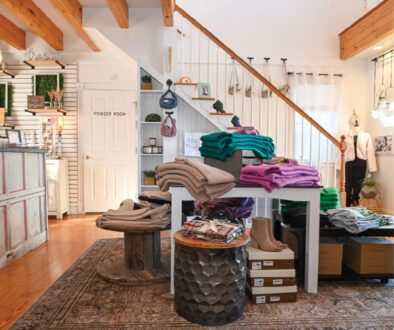The evolution of the bathroom during Victorian times
American Victorian bathroom facilities were modernizing as the 19th century turned into the first decades of the 20th, and they also reflected a clear divide in comfort and convenience between the rich and the less well off.
Most Americans of the 19th century did not have a dedicated bathroom and used an outhouse or outdoor privies. They were called “necessary houses” or “houses of office” by some. The original outhouse remains on the grounds of Cape May’s 1879 Physick Estate. While not on the guided tour, an interpretive sign identifies it.


“There is a door on either side,” said Cape May MAC Curator Ben Ridings. “That’s because there was originally a wall that went down the middle of the building. Therefore, the estate outhouse had two stalls. According to oral histories, the staff used the outhouse. That changed when a flushing toilet was added to a room in the back of the house, where the tour office is today. The house staff could use the toilets, while the men working in the yard still had to use the outhouse.”
In contrast is Dr. Emlen Physick’s private bathroom, open to viewing on guided tours of the Physick House Museum, designed by renowned Victorian American architect Frank Furness. The bathroom is stunning and luxurious, with marble floor and walls, lincrusta on the upper walls and ceiling, and a door that is decorated with a stunning, jewel-toned, stained-glass panel. The Physick House was built with conveniences decades ahead of their time, and the two interior bathrooms are arguably one of the best examples. Dr. Physick’s bathroom, and his mother Mrs. Ralston’s bathroom, were both dedicated rooms in the house, containing the main components we know today: the bathtub, sink, and toilet.
A room dedicated to bathing and the other necessities of life was unusual for 1879 and was uncommon until World War I, according to Victorian America: Transformations in Everyday Life, 1876-1915, by Thomas J. Schlereth.
“In the Centennial year, only wealthy homes had bathrooms, that is, prescribed areas for bathing … The sink, stool and tub migrated to the bathroom from elsewhere inside or outside the home.”

If homes had an indoor toilet rather than an outhouse—often a stool or chair that contained a porcelain commode or chamber pot that had to be emptied—it would have been located in a closet or other storage area. Sinks, or a wash bowl and pitcher, were used in bed chambers. The bathtub, a tin-plated or wooden tub, was used in the kitchen, where hot water was available.
Toilet paper was refined during the Victorian era. In 1899, Philadelphians Edward and Clarence Scott improved upon commercially prepared toilet paper, until then, bulky packages of five sheets. They sold toilet “tissue” that came in perforated rolls and gleamed white, communicating cleanliness. Victorian sensitivities prevented effective advertising, however.
“Selling TP was unmentionable in the Victorian era, so the Scott brothers had to devise a unique strategy to get druggists and consumers to purchase it,” according to Scott Company history. “They gave each druggist a proprietary interest by allowing them to create their own custom rolls.”
By 1910, Sears Roebuck was selling fixture trios of tub, toilet, and sink (freestanding or attached to the wall) that fit in an area of 48 square feet, paving the way for the middle class to leave the outhouse behind. The fixtures came in standard sizes, with standard fittings, many made by plumbing manufacturer American Standard. It would take some time for the American bathroom to be ubiquitous, however, even after World War I. Even in 1940, Ridings said, about 20 percent of homes in New Jersey still lacked complete plumbing.

The late 19th-century Victorian London plumber Thomas Crapper was not the inventor of the flush toilet, as some mistakenly believe. He invented the ballcock, which improves the tank-filling mechanism and is still in use today. Nevertheless, Crapper’s name would become synonymous with the devices he sold, explains Nate Barksdale in History.com’s “Who Invented the Flush Toilet?”
While the English word ‘crap’ predates him by centuries, it was due in part to American servicemen stationed overseas during World War I that the name came about. These doughboys, unfamiliar with the relatively new-fangled invention, referred to the toilets as ‘crappers’—due to the Crapper brand’s ubiquity in England and France—and brought the term back home with them after the war.



